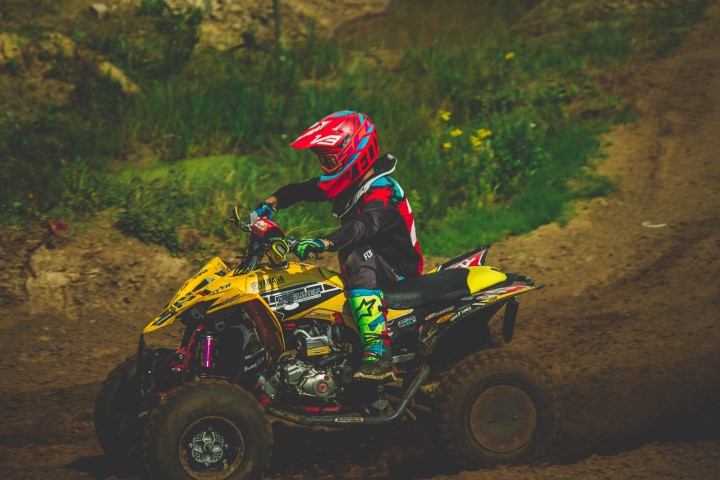
The love and fondness for ATV quads is rising with new adventure seekers looking to satiate their adrenaline cravings. The stylish riding gear, bumpy terrains, and herculean quads gain the fancy of kids, youths, and adults alike. Further, brands like Can-am add vigor to their desire by launching brawny ATVs equipped with laudable features.
But, risks are old confidants of off-roading. And, if you are a newbie, the chances of getting injured are high. Still, if riding an ATV is poking your desires, these tips on keeping yourself safe is a must-read.
Here is how you can keep yourself safe when riding an ATV for the first time.
- Wear appropriate gear
Investing in a good quality riding gear is as important as buying a good ATV. Do not cut corners here.
Proper riding gear comprises a full-face helmet approved by the Snell Memorial Foundation or DOT (Department of Transportation), hard-coated polycarbonate goggles, heavy-duty gloves, long-sleeved shirt, long pants, and sturdy over-the-ankle boots with low heels.
To further protect yourself, wear a chest protector, shoulder protector, shin pads, elbow guards, and knee pads.
- Understand proper posture and riding positions
For a safe and controlled riding experience, maintaining the right posture and riding position is of utmost importance.
While riding on challenging terrain, stay mindful of dips and bumps. Do not lock your elbows and keep your knees bent. Sit straight while riding on a flat trail, but stand up on the footpegs with knees bent and elbows out while driving through a more bumpy trail.
Distribute your body weight evenly while taking turns. If you are taking a turn to the right, lean to the left side. Understanding such proper riding posture and positions will help you in avoiding strain and preventing injuries.
- Check the vehicle before setting out
Whether a 2-wheeler or a 4-wheeler quads, always check your vehicle before you set on for riding to keep hassles at bay.
First and foremost, check the gas. If you are riding an old ATV, it would be better to drain old gas and refill the tank. Next, check the tires for tread, punctures, or bulges on the surface. Check tire pressure with a gauge to find slow leaks (if any) and oil the chain. Check the brake fluid level, oil, battery, handlebar grips, and all the cables and connections.
- Take care of the paperwork
ATV riding rules vary from state to state. Most of the states require you to register and insure your quads the way you register your car. Also, quads are meant for off-roading. They aren’t meant for highways or other kinds of paved roads. So, if you want to ride your ATV on a public trail, you will have to pay a fee and get a permit.
- Practice, practice, practice
All it takes is a little practice to learn to properly ride an ATV. If you are a beginner, practice on smooth trails before you hit a bumpy terrain.
Work your way with gears and thumb throttle unless you are confident enough. Practice all the controls thoroughly before you go on a rough, long-distance adventure.
And, irrespective of whether you are a novice or an expert rider, never ride faster than what you can control.
- Do not ride under the influence of drugs or alcohol
Last but not the least; don’t ride under the influence of drugs or alcohol to keep yourself and others safe. If you ride after doing drugs or alcohol, you will likely end up behind bars or on a hospital bed.
The bottom line
Riding an ATV on a rough trail is sure to give you the adrenaline rush you seek, but it also put you at great risk, especially if you are new to it. However, if you keep these tips and considerations in mind, and practice under your belt, we’re looking forward to seeing you on the trails, off the trails, and enjoying the ride.










